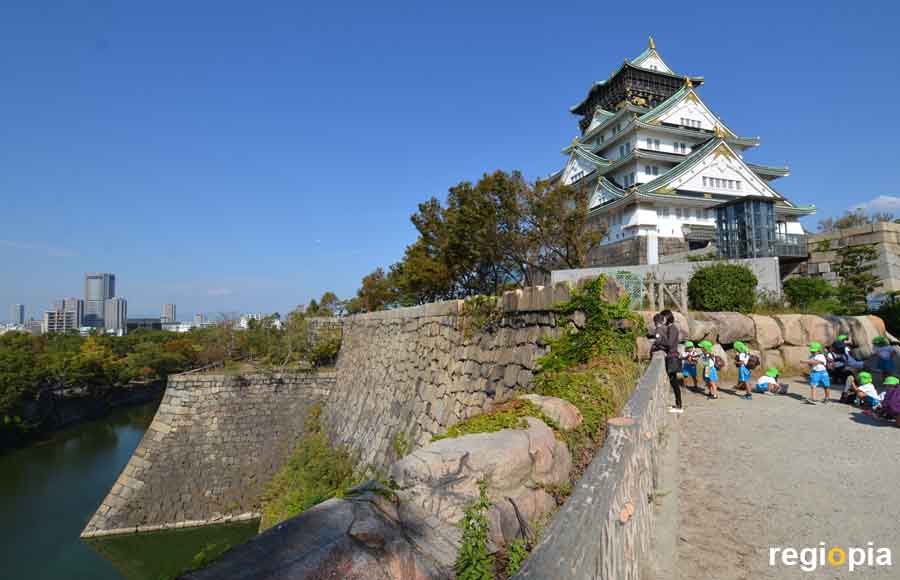
Osaka Castle
The most famous sight of Osaka is the castle, which stands in a huge park. The actual castle is surrounded by a wide outer moat and a small inner moat. Behind the first moat, mighty ramparts of large boulders rise up. Through gates you reach the inner area of the fortress. Here you are in front of the second moat, with high walls behind. A bridge leads to the core of the castle complex. Now you are standing in front of the castle of the Shogun, which is protected at the base by mighty boulders. The upper part of the castle was built of wood.
The castle of Osaka was built in 1583 by Toyotomi Hideyoshi, who was one of the three empires in the history of Japan. As early as 1615, the castle was conquered and destroyed by Ieyasu Tokugawa. The Tokugawa dynasty rebuilt the castle, but the wooden tower burned down after a strike in 1665. In 1843, the castle was rebuilt to be destroyed again in 1868 in the war for the Meiji restoration. Around 1930, the castle was rebuilt and was destroyed again in World War II. The Osaka Castle was rebuilt in 1997 using concrete, but looks like its historic predecessors from the outside.
The castle now houses a museum about the history of the castle, and the top floor has an all-round lookout deck that overlooks all of the city, making it a top attraction of Osaka.

Shitenno-ji Temple
The Shitenno-ji is one of the oldest Buddhist temples in Osaka, it was built as early as 593. The name Shitenno means "The Four Heavenly Kings". Each king has its own color and stands for a direction. Together they protect the kingdom. The temple complex was created after the pattern of Chinese temples. The buildings were made of wood and burned down several times. In 1960 the most important buildings were built of concrete. The Shitenno-ji consists of numerous historic buildings. Especially worth seeing is the 5-storey pagoda. The Shitenno-ji is the most beautiful temple in Osaka.
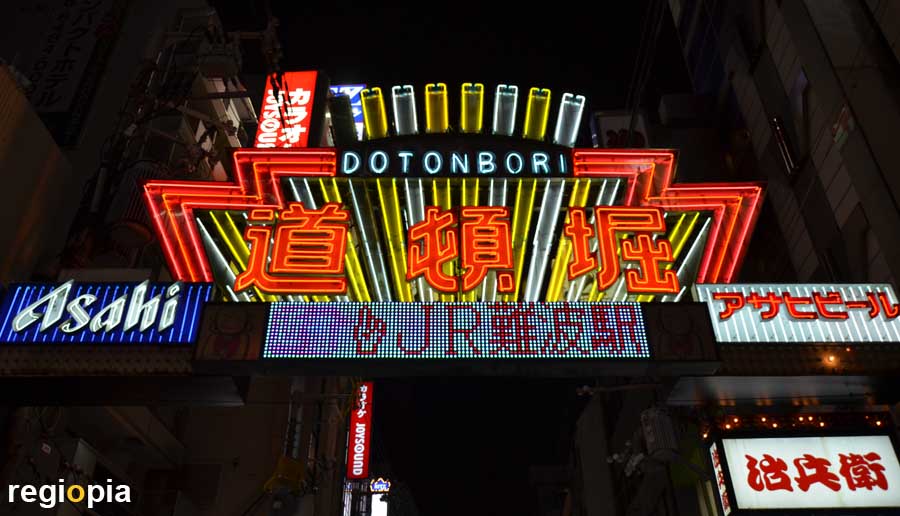
Dotonbori
Osake city center is located between the subway stations Osaka-Namba and Nipponbashi. Parallel to the river Dotonbori runs the shopping street with the same name. In the Dotonbori pedestrian area you will find many restaurants that draw attention with imaginative neon signs. The hustle and bustle on the Dotonbori is famous in all of Japan.
The Dotonbori district became the theater district of Osaka under the Tokugawa Shogunate in 1621. The name comes from the entrepreneur Doton, who built the channel (Japanese hori) in 1612. Doto plus hori became Dotonbori.
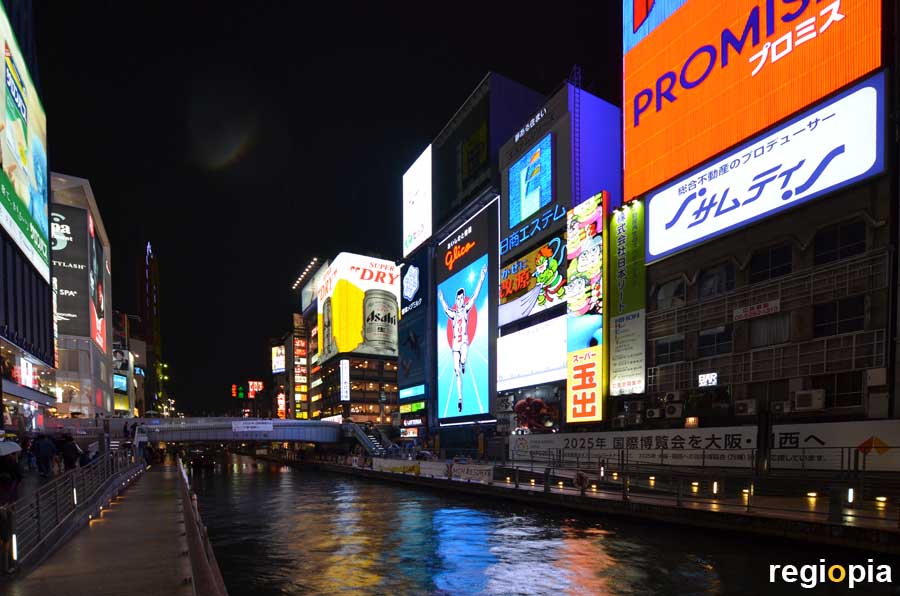
Dotonbori River
At the Dotonbori River, the towering LED screens are reflected in the water. The Glico Sign has even made it to a well-known landmark of Osaka in all of Japan. The sprinter raises his arms as he reaches the finish line. The Glico Sprinter was set up in 1935 for the first time and since then renewed over and over again. Many Japanese tourists are photographed in front of the Glico Sprinter, raising their arms in the air. Glico is a confectionery manufacturer from Osaka.
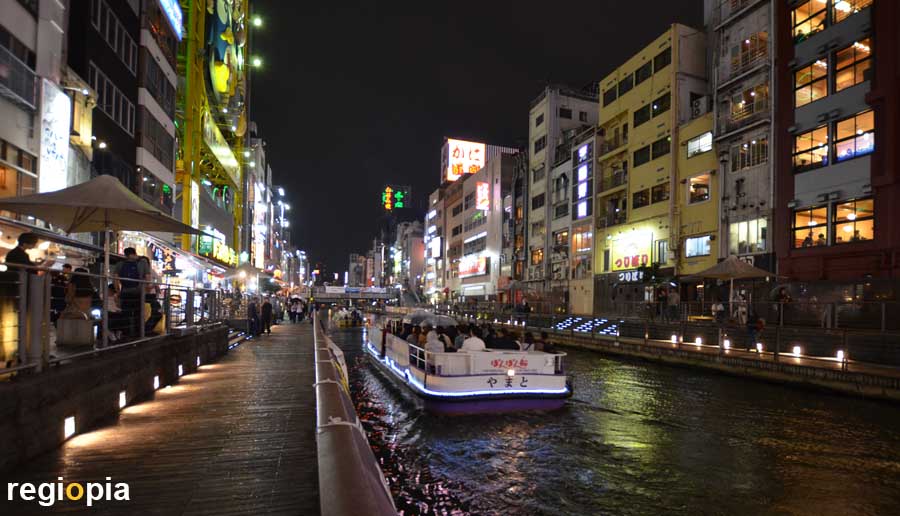
Osaka River Cruise
Excursion boats sail on the Dotonbori River. Especially at night, the boat trip is a very popular tourist attraction of Osaka. The jetty is located on the Ebisu bridge. The approximately 20 minute drive is not really worth it, as the route is quite short, you can also walk along the shore for free. The ride costs around ¥ 900 for adults (price 2019). There are also larger tours that once circumnavigate the center of Osaka.
www.ipponmatsu.co.jp/cruise/tombori.html
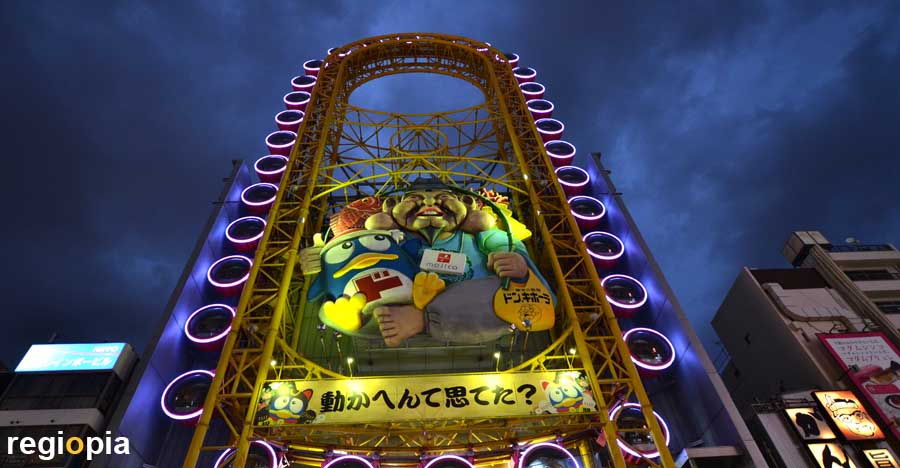
Don Quijote Ferris Wheel
Another tourist attraction in Osaka is the Ferris wheel of Don Quijote. The construction is unusual, plexiglass ball looping along a steel structure. The ball constantly adjusts to ensure that passengers always sit straight. The view is breathtaking but the construction does not seem very trustworthy and the air in the plastic ball was a bit stuffy. You get a lot higher than it looks from below, the view over Osaka is stunning. Don Quijote is a cheap department store with knickknack up to the ceiling. On the way out you have to pass several floors. A very Japanese experience.
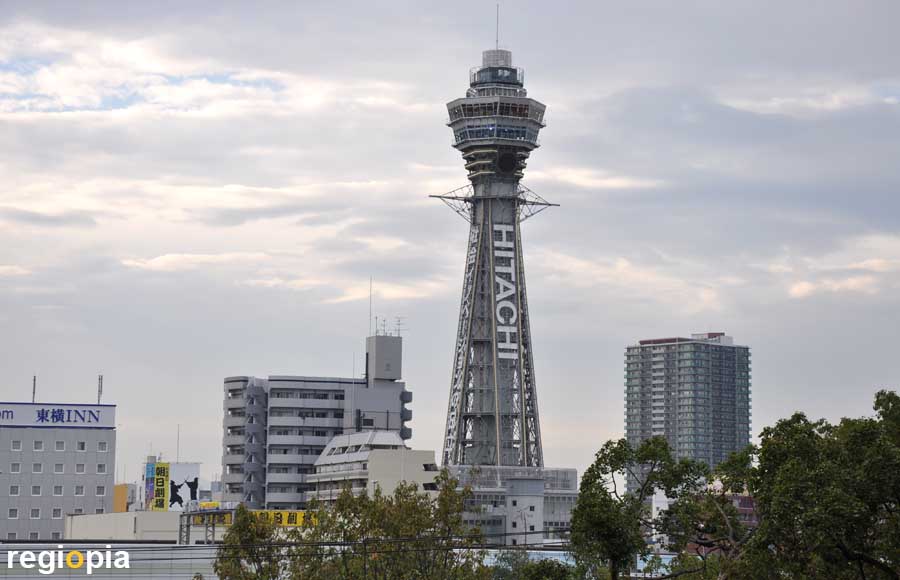
Tsutenkaku Tower
The 103m high Tsutenkaku Tower has long been the landmark of Osaka. The Tsutenkaku was built in 1912 as a 64 m high tower in the Naniwa district. In 1943 the tower burned down and was rebuilt in 1956. The viewing platform was one of the attractions of Osaka. Today, there are significantly higher towers in the city. The Tsutenkaku Tower stands over a street in a nightlife district with many restaurants. For this reason, the visit to the tower can be worthwhile.
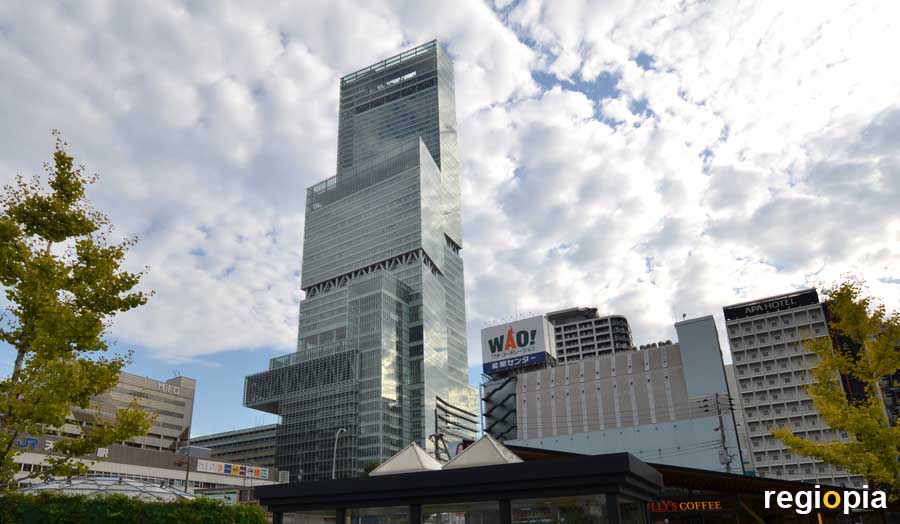
Abeno Harukas Tower
Osaka's highest observation deck is the Abeno Harukas skyscraper at Tennoji ring-road station. The 300-meter-high tower at Abenobashi Station has been Japan's tallest skyscraper since 2014. At the top of the skyscraper there is a square under the open sky with a cafe. High glass walls protect the roof top square from strong winds. On the lower floors of the 59-storey office tower is a shopping center.
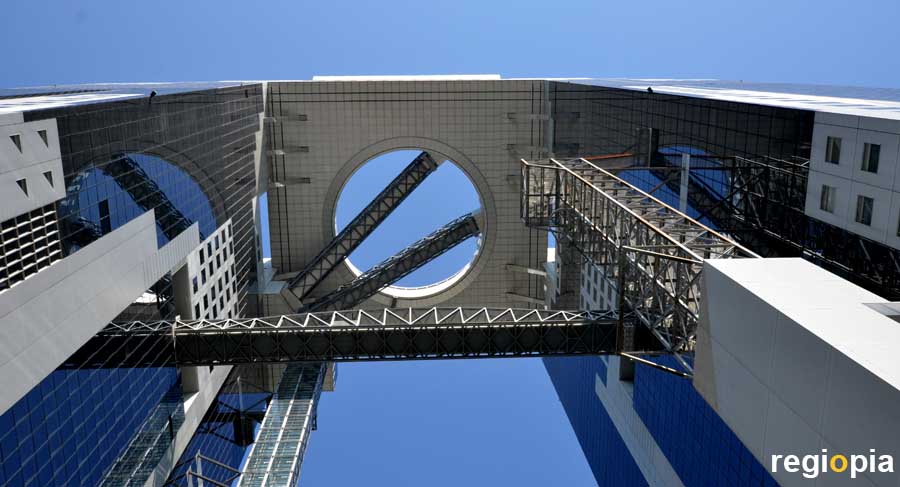
Umeda Sky Building
The Umeda Sky Building is an extraordinary tower block made up of two towers connected at the top. This square shaped connection level has a huge hole in the middle with two inclined escalators leading to the observation deck. You drive up through this tunnel of glass and steel, looking down. A very spectacular design but very eciting for people with a fear of heights. The Umeda Syk Building was opened in 1993 and designed by architect Hiroshi Hara. The skyscraper is 173 meters high and is located near the railway station of Osaka. The Umeda Sky Building has a great view of the center of Osaka and the Yodo River.
Map Osaka Attractions
ads
Travel Guide Osaka
ads
ads


